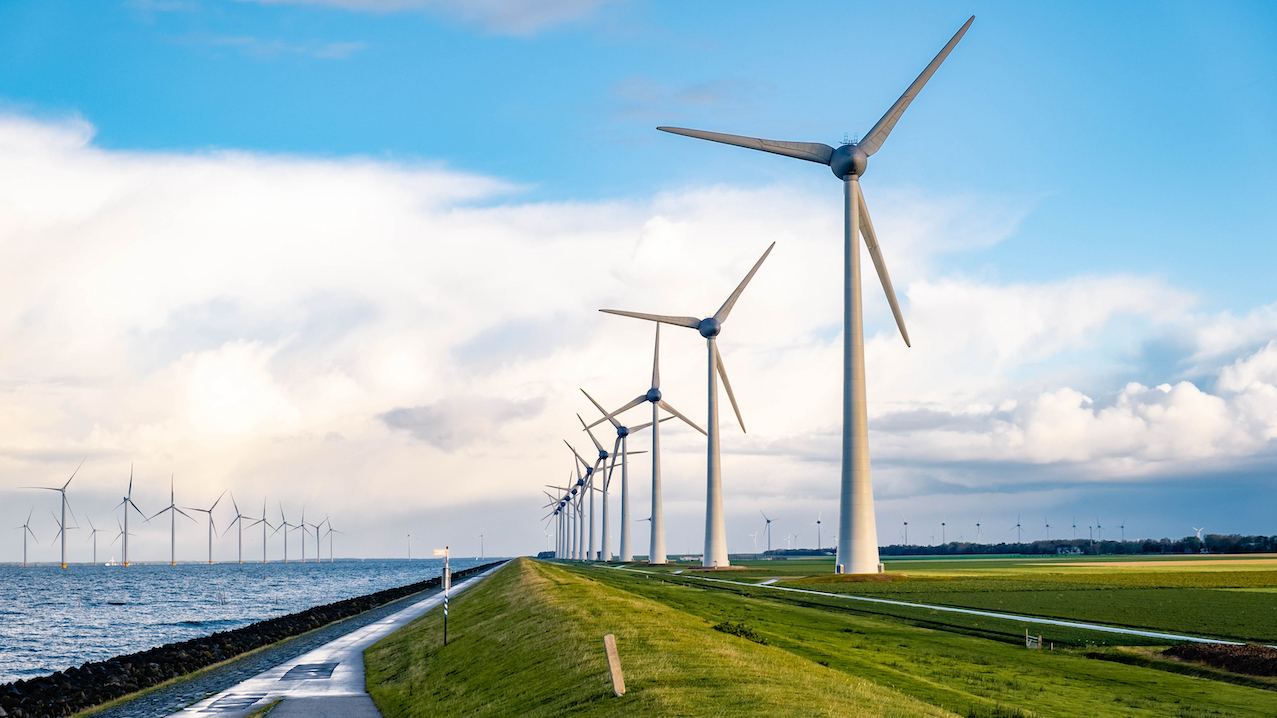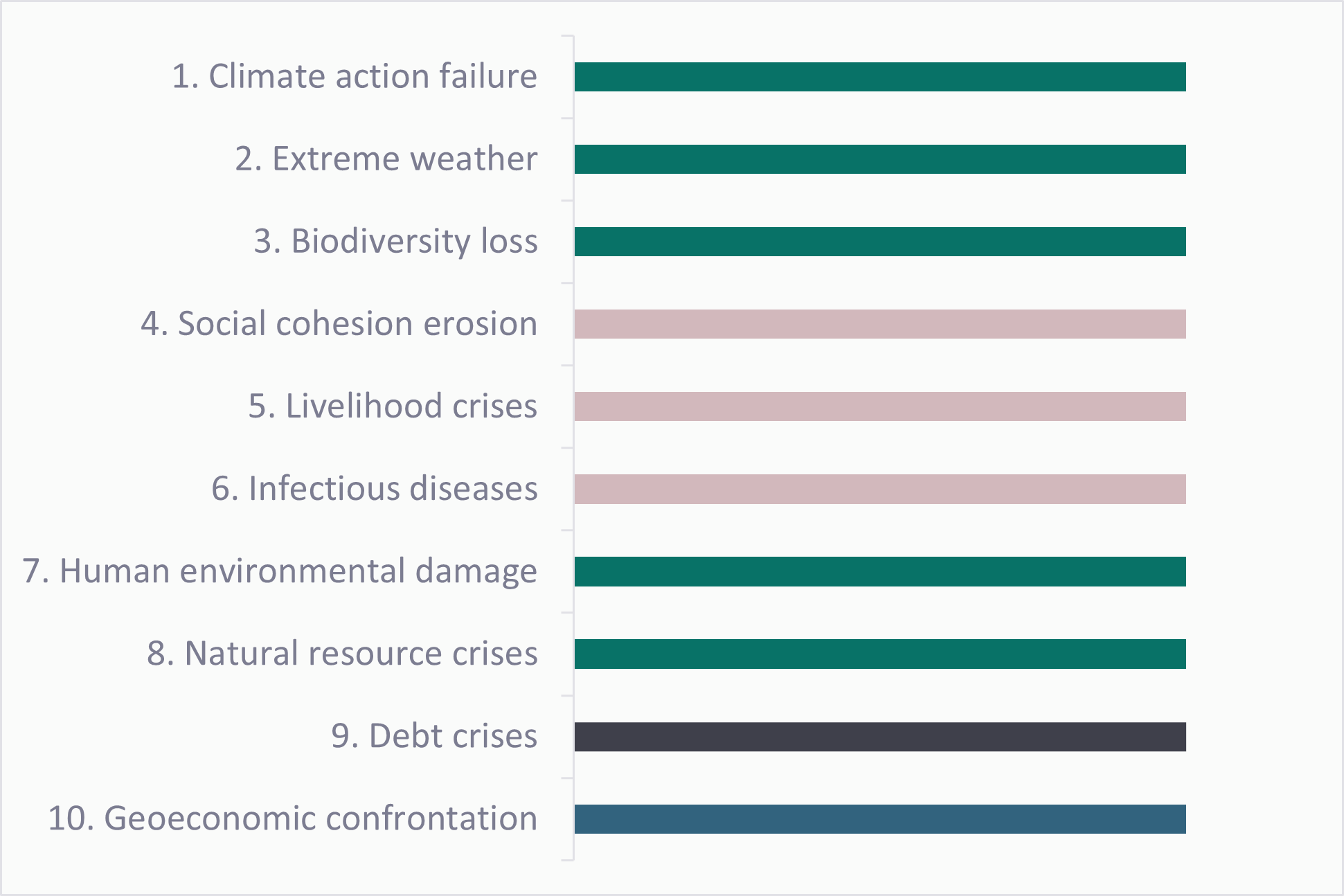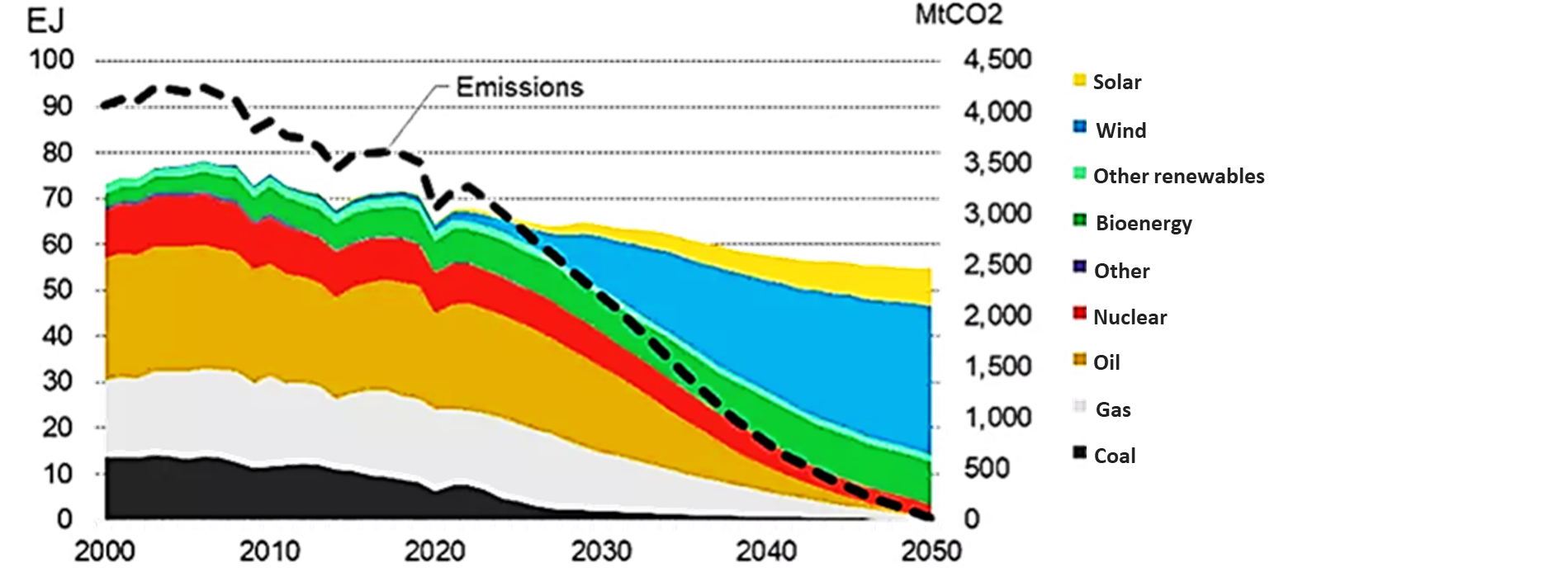
Setting ambitious goals to achieve net zero
Capital Dynamics’ Verena Rossolatos and Barney Coles discuss how clean energy, private credit and private equity can help to align investment portfolios with a net-zero pathway.
Commitments by governments and corporates to achieve net zero are on the rise around the globe. Net zero cannot be achieved, however, without the financial sector and pressure is mounting on asset managers to support the transition towards lower-carbon economies.
According to the World Economic Forum Global Risks Perception Survey 2021-2022, climate action failure is perceived as the most severe risk over the next ten years (see Figure 1).
Figure 1: The most severe risks on a global scale over the next ten years

Recently, institutional investors have increased their demands for incorporating environmental, social and governance (ESG) considerations in the investment process, whereby climate-related risks and opportunities have gained special attention. In the PwC Global Investor Survey 2021, 65% of respondents stated that reducing greenhouse gas emissions is the top priority, ahead of worker health and safety (44%) and diversity, equity and inclusion measures (37%).
How can we get to net zero?
Getting economies onto the path towards net zero requires businesses to innovate and adopt sustainability measures that are centred on reducing greenhouse gas (GHG) emissions. For many firms this requires cutting GHG emissions by at least 50% by 2030.
Businesses will need to make investments across their resource management, production lines and technologies as well as innovate their products and services to achieve such reduction targets. Failing to make these adjustments can be costly to businesses. Not only do consumers expect firms to improve their environmental performance, failure to do so also creates unique financial risks, which can severely affect a firm’s performance.
A key question, however, is how to deal with the free rider problem – namely that these are global impacts that individual companies can do little to effect. As such, the goal must be to create a virtuous investment cycle where less carbon-intensive businesses (or businesses on a path to decarbonisation) are favoured by public and private investors alike. As this trend develops (and we are already seeing signs of it), capital flows will naturally be attracted to asset managers committed to long-term net-zero goals.
Another way to limit the free rider problem is through regulation, which is gaining substantial momentum in Europe and the US. Since climate-related risks can severely affect investment values, regulators such as the Financial Conduct Authority (FCA) in the UK, the European Commission and the Securities and Exchange Commission (SEC) in the US are either planning to roll out, or have already introduced rules, that require the measurement and disclosure of financially material climate risks.
On the flipside, investments into renewable energy projects and businesses, which adjust their business model to be compatible with a net-zero future, represent attractive investment opportunities and have the potential to generate long-term returns.
The goal must be to create a virtuous investment cycle where less carbon-intensive businesses (or businesses on a path to decarbonisation) are favoured by public and private investors alike.
Net zero-aligned investing – three investment solutions for a profitable future
There are different ways in which investors can support the net-zero transition through their investment decisions. Below we discuss three attractive approaches to align investment portfolios with a net-zero pathway, which have the potential to generate long-term enhanced investment returns:
- Investments into clean energy to support the scaling of climate solutions
- Private equity investments into businesses compatible with a net-zero future
- Private credit investments with ESG ratchets aimed at incentivising businesses to adopt ESG-friendly practices and reduce emissions over time
Clean energy
Reaching net zero requires economies to decrease their reliance on fossil fuels and scale up green energy sources, such as wind, solar and other renewables (see Figure 2).
For many years, there has been a strong argument for renewables as a secure source of energy. However, with rapidly increasing fuel costs and energy security concerns stemming from the invasion of Ukraine, there is an even more urgent need to tackle the climate crisis. This creates substantial opportunities for investors in both well-established and newer, innovative technologies.
In the medium term, we expect to see an expansion of renewables capacity across Europe as governments loosen restrictions and pass new legislation to facilitate further development activities, while what may be now considered “frontier” technology (such as green hydrogen and, to some extent, batteries) will become more mainstream and vital to Limited Partner portfolios.
However, we do not believe these investments will become in any way commoditised over time nor available “off the shelf”. Barriers to entry will continue to be high, and the quality of an underlying investment in this space will continue to be driven by the expertise of the General Partner and its ability to leverage relationships and local market presence to deliver the most attractive risk-adjusted returns.
Figure 2: Total primary energy by fuel and energy-related CO2 emissions in Europe

Private equity
Private equity investments are well suited to support the transition towards net zero and create long-term enhanced returns, consistent with a manager’s fiduciary obligation. This is because private equity managers assert influence over portfolio companies and facilitate change in the business model, governance and strategic outlook as part of their value creation plan.
In the context of net zero, private equity managers can encourage firms to measure and report greenhouse gas emissions, manage climate-related risks and set reduction targets to remain commercially viable in a lower-carbon economy, which increases enterprise valuation at exit.
This approach represents a unique opportunity for redirecting capital towards firms specialised in innovative climate solutions and scaling the technologies, but also helps businesses operating in high-emitting sectors to adapt. In particular, middle-market buyout funds are likely to gain greater interest under the lens of net zero. This is because medium-sized companies increasingly provide the innovation and technologies required to transform a high-emissions sector into a more sustainable operating model.
Private credit
Private credit investments can support the goals of net zero by introducing incentive schemes (ESG ratchets) that reward borrower companies for achieving pre-defined ESG targets through a reduction of interest rates, or, alternatively, increase interest rates for failing to meet the targets.
Since the transition to lower-carbon economies requires large-scale behavioural change, using ESG ratchets can be an effective way to incentivise businesses to measure GHG emissions, define credible emission-reduction targets and lay out transition plans, which allows companies to remain viable in a net-zero world. While ESG ratcheting is still at an early stage at present, we believe this approach will continue to grow and offers great potential for investors to manage their top ESG priorities in investment portfolios.
Our approach to net zero at Capital Dynamics
As an early adopter of ESG in the private markets, Capital Dynamics recognises the important role that alternative asset managers can play in leading the transition to a net-zero economy.
As climate change accelerates, setting a clear focus on GHG-reduction targets in line with the 1.5°C objective will play a critical role in minimising environmental-related financial risk to our investments. This represents attractive investment targets for financial and strategic buyers in the future as the world collectively accelerates towards net-zero goals over the next two to three decades.
It is for these reasons that we are committed to taking immediate action in the advancement of net-zero ambitions at the fund, asset and operational levels of Capital Dynamics. That is why this year our firm pledged to net zero with the Net Zero Asset Managers Initiative.
In addition, we have been the co-lead of the Institutional Investors Group on Climate Change (IIGCC) Net Zero Investment Framework for Private Equity – a momentous achievement in developing the first Paris-aligned investment framework for private market investments. With our deeply rooted passion to combine attractive financial returns with purpose-driven responsible investing, we are committed to align our investment portfolios with the goals of net zero across all investment strategies and we are proud to be one of the first middle-market private equity firms with a substantial US presence committed to do so.
We are also committed to achieve substantial progress towards net zero well ahead of the 2050 timeline. That is why Capital Dynamics has defined an ambitious five-year climate plan to reduce our own emissions across operations and our financed emissions in investment strategies by 2027, which includes:
- developing asset-decommissioning plans for new projects to reduce end-of-life emissions in our clean energy business
- Increasing the proportion of our private equity portfolio companies that set science-based GHG-reduction targets and predominantly invest with managers that are committed to supporting net-zero goals
- Supporting our borrower companies to measure GHG emissions and implement ESG ratcheting focused on emission-reduction targets in private credit
- Reducing our own emissions from office energy consumption, business travel and employee commuting
At Capital Dynamics, we look forward to creating a prosperous future, by investing with purpose. We believe setting ambitious net-zero goals and starting the implementation now, rather than in a decade’s time, is crucial for capturing the return potential that lies ahead in the transition towards a lower-carbon future.
Verena Rossolatos (vrossolatos@capdyn.com) is vice president, ESG specialist, and Barney Coles (bcoles@capdyn.com) is co-head of clean energy, at Capital Dynamics.
About Capital Dynamics
Capital Dynamics is an independent global asset manager. The firm has over three decades of expertise in lower middle-market private equity (primaries, secondaries, direct investing) and private credit, and is an established first mover in mission-critical renewable energy generation.
- Primaries: investments in mid-market funds within buyout, specialist, turnaround and growth sectors
- Secondaries: investments in smaller and more complex secondary transactions, including fund restructurings, tail-ends, and preferred interest structures
- Direct investing: direct investments in mid-market companies alongside core and specialist sponsors
- Private credit: direct lending to mid-market companies with focus on PE-owned or controlled enterprises, complementing PE business
- Clean energy: direct equity investments in renewable energy technologies, with a focus on utility-scale and distributed generation, solar and wind
Capital Dynamics is an early adopter and consistent innovator in responsible investment, with a trademarked approach to ESG underwriting and best-in-class results from leading ESG benchmarking organisations (e.g., PRI and GRESB).
As of Q2 2022, Capital Dynamics oversees more than USD14bn in assets under management and advisement, and employs approximately 160 professionals globally across 14 offices in Europe, the Middle East, North America and Asia.
For more information, please visit: www.capdyn.com




